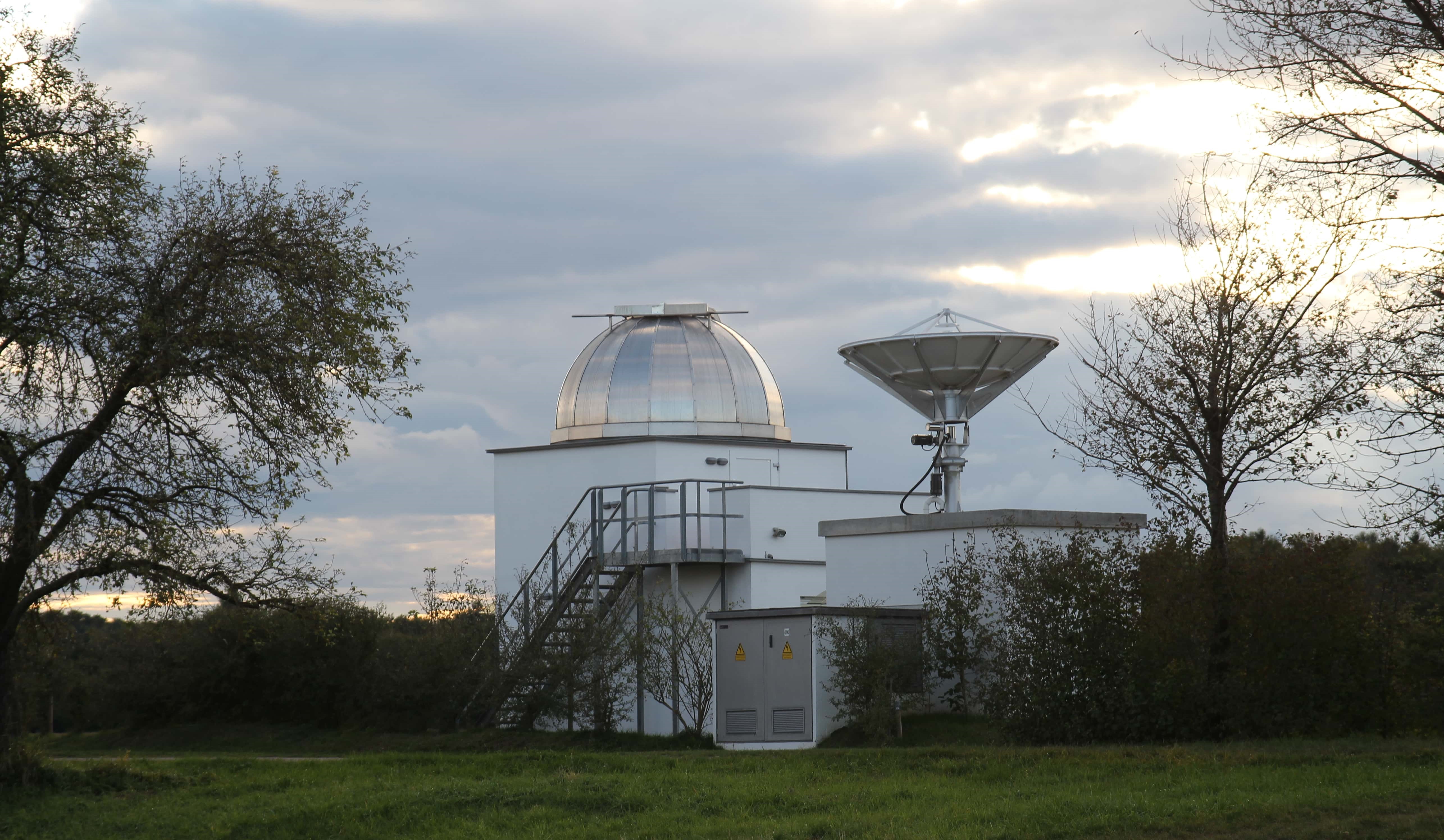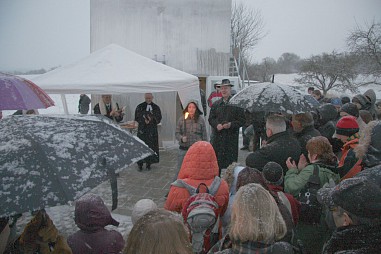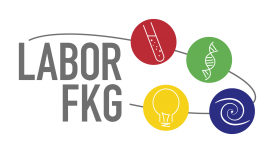Thus, after months of hard work, the observatory was inaugurated on December 18th of 2009, in time for the end of the International Year of Astronomy 2009. On this day, the project was presented to a broad and interested public as well as to representatives from science and politics, and at the same time, the external partners were publicly thanked. The keynote speech was held by Prof. Dr. Matthias Steinmetz, Director of the Astrophysical Institute in Potsdam and Chairman of the Association of German Observatories.
During 2010, the telescopes were installed, set up and adjusted at the observatory. This was done in close cooperation with staff of the Chair of Astronomy at the University of Würzburg. Once again, numerous students were involved in this phase.
The first main instrument was a Schmidt-Cassegrain LX 200 telescope from Meade with a mirror diameter of 30 cm.
Since the winter semester 2010/11, the Chair of Astronomy has been conducting part of the practical training of students at the observatory. Pupils are always invited to the seminars and exercises. Especially students studying to become teachers can thus be involved in the professional supervision of individual sub-projects and thus gain experience in dealing with students already during their studies.
In 2011 the idea was born to involve the students in the scientific research of the chair. The project "Fluctuations in the brightness of active galaxy nuclei" developed from this idea.
The existing telescope was too small for the CCD images required for this purpose.
After some applications for financing a larger telescope were not successful, the University of Würzburg was finally able to procure a telescope with mount from funds of the University of Würzburg, which was put into operation in early 2012.
Both sides benefit from the close partnership between the student laboratory and the Chair of Astronomy: The students' laboratory has access to the chair's high-quality astronomical equipment and this access to an observatory with very good observation conditions. This is important because Würzburg otherwise has only one public observatory, which is located in a now heavily built-up area and can therefore only be used with restrictions due to the existing light pollution.
In 2016 the partnership was put on a firm foundation. Through a cooperation agreement, the observatory, named after Prof. Dr. Hans Haffner since 2012, became a school and university observatory.
In 2017, the Hans Haffner Observatory was extended by a three-meter radio telescope.



